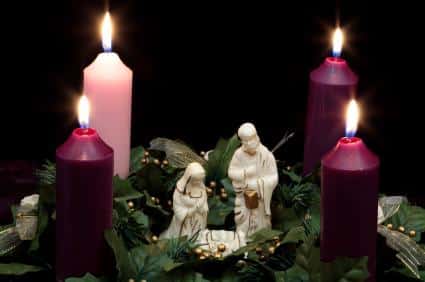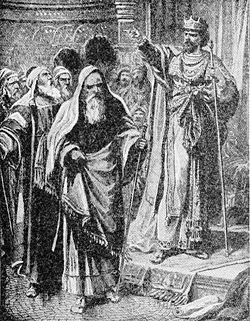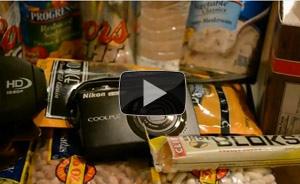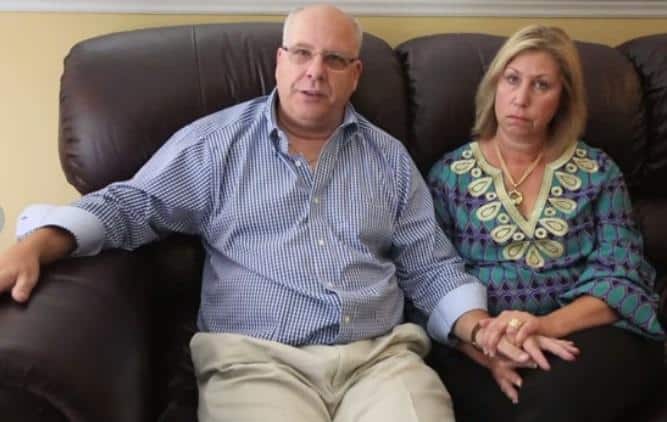 As Christmas approaches, many parents struggle to keep their children from being sucked into seasonal consumer frenzy. Some say that they’re sick of spending too much money and throwing out too much stuff, but it’s just too hard to push back against the constant barrage of advertising—too hard to keep their own kids calm when everybody else is hyped.
As Christmas approaches, many parents struggle to keep their children from being sucked into seasonal consumer frenzy. Some say that they’re sick of spending too much money and throwing out too much stuff, but it’s just too hard to push back against the constant barrage of advertising—too hard to keep their own kids calm when everybody else is hyped.
My mother had these concerns when I was an infant. I wasn’t aware of that until much later. By the time I was old enough to be aware of what was going on, she had established family Advent traditions that kept me in a state of delighted anticipation that wasn’t connected to the merchant’s holiday. I don’t remember feeling deprived or thinking that I was missing out on something. I did enjoy the externals of Christmas preparation—the tree, the gift-making, the festive food. I also enjoyed feeling myself a part of a huge and important story that had happened once and was still happening.
Here are some specific practices that helped connect me with that story.
Moving Creche
Our practically indestructible wooden Nativity figures were prominent throughout Advent, though they weren’t composed into a traditional creche until Christmas Day itself. At the beginning of Advent, we’d position the ox and its manger on a bookshelf in the living room, which was designated as “Bethlehem,” with the shepherds and their sheep in the “nearby countryside” on the next shelf down. Mary, Joseph and the donkey were set a couple of rooms away, and every night we moved them a little closer to Bethlehem. The Magi, meanwhile, waited in the easternmost bit of the house; we knew they didn’t start moving until Jesus was born and the star came up, and then they’d make their journey over the next twelve days while Mary rested.
When I was small this exercise made the story more vivid in my mind; I imagined the couple trudging toward the place of registration, maybe tired, maybe worried, maybe feeling disoriented at having to leave home with the baby so near being born, maybe excited or afraid about what the angel had told them the baby would be. I sometimes laid Mary down on her side for a nap, which I figured she needed if she had to travel a long way while pregnant, and I talked to her in my best reassuring manner. It was helpful to have a Nativity set sturdy enough to stand up to my well-meaning but clumsy handling.
The baby himself appeared sometime on Christmas Day when we weren’t looking. Usually he arrived in the morning, but once he wasn’t in place until late afternoon. I took this as a reminder that babies don’t always come just when you expect them, or perhaps that God doesn’t always show up when you expect Him and that you have to keep on looking. My mother told me later that she’d forgotten where she’d hidden the baby.
Advent Wreath
Every night we sat together in the dark around the Advent wreath with its four candles; for the first week we had one candle only, but each Sunday a new candle flame was added and the light grew. We sang, prayers, told Bible stories, sat quietly and thought about the darkness and the light.
This meant a lot to me because I was easily frightened as a child, by the literal dark, by the news with its wars and random killings, by the brokenness within and between the people I loved. My mother taught me John 1:5 early on: “And the light shineth in darkness; and the darkness comprehended it not.” I liked the double meaning of comprehend—to understand and to swallow up—and I was viscerally reassured by the candles in the dark and the greater light of which they were a reminder.
Advent Banner
When my younger brother was a toddler, we added an Advent banner to our evening worship. On the first day of Advent, the banner was empty except for one corner that was embroidered with a green shoot thrusting out of a stump. We read Isaiah 11:1-9, and we talked about the things in our lives that were dying and the places where new life was appearing.
Each night after that we added a symbol to the banner. First came a dove, for the Spirit of God that hovered over the water when the world was created. Then a fruiting tree for Adam and Eve, a rainbow for Noah, and so on up through the stories of the Exile. Sometimes we read those stories from the Bible, and sometimes we told them. I loved it when it was my turn to tell the stories in my own words, though my mother pressed me not to drag my narratives out to a length that drove my brother to distraction. Then we read from the prophets—Isaiah’s vision of the light that came to the people sitting in darkness, Habakkuk’s cry for God’s justice, Malachi’s promise of the sun of righteousness rising with healing in his wings, and more.
The Advent readings gave me a better sense of the hopes and longings that Jesus stirred up in people when He was hailed as the Messiah. As I grew up, they also connected strongly to my own perception of the things that were wrong with the world, and the hope for the coming of God’s Kingdom on earth.
We started with the readings in the Advent banner kit that we’d been given, and ended up altering them to include our own favorite passages. Googling “Jesse Tree” brings up various suggestions for daily readings and symbols. Here’s one such listing: https://www.crivoice.org/jesse.html
Advent Calendar
We also used Advent calendars (free, from an ecumenical group called Alternatives for Simple Living) that focused on living here and now in a way that moves us closer to God’s kingdom. Each day had its own reading or question. Some days we focused on preparing our own hearts and minds for God’s coming. Some days we considered questions about the effect of our holiday gift giving, decorating, and celebrating on our brothers and sisters in Christ and on God’s creation. There were some specific suggestions for producing less trash and investigating the sources of the things we bought, and many open-ended questions. Some days reminded us to remember and give thanks for the things we already had, both material and nonmaterial. Some of these were tied to suggestions about setting money aside to give to people who had less.
We learned from the practical suggestions, and the questions sparked lively discussions as my brother and I grew older. I think, too, that being aware of how much we had and thinking what we could give to other people immunized us fairly well against feeling that we had to have whatever gift items were being hyped that year. I always knew we had everything we needed and then some.
Alternatives for Simple Living has closed down, but their Advent resources are still available free online. Links to these and more Advent resources are online at https://www.jubilee-economics.org/journal/2011/11/1/simple-living-works-2thanksgiving-advent-and-christmas.html
This is by no means an exhaustive listing of Advent traditions. Different things will work for different families, and at different times in the life of the same family. What matters is to step back from the commercial Christmas craziness and to keep some space and time open to remember the Light and the darkness, to make ourselves a little bit more ready for God’s coming.
©2012 Off the Grid News










